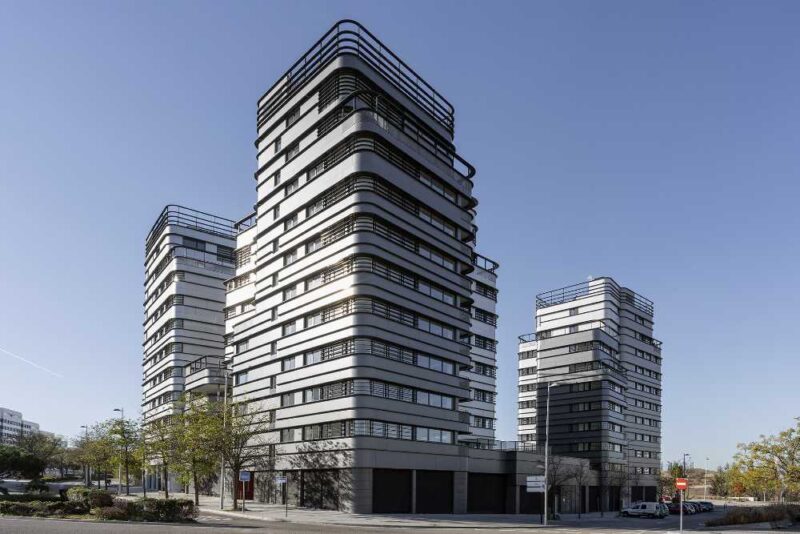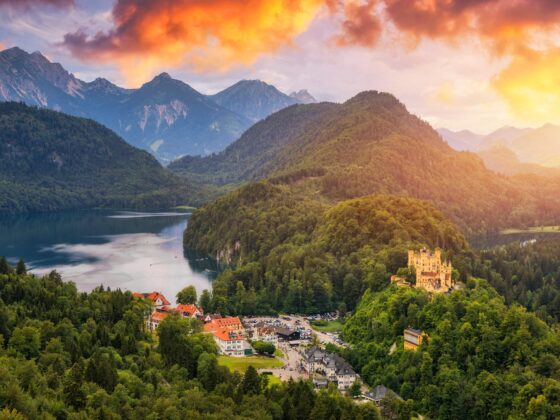In the bustling urban sprawl of today, where steel and glass often reign supreme, the idea of integrating nature into high-rise residential architecture is not just a trend; it’s a transformative vision for the future. Imagine stepping out of an elevator to be greeted by a cascade of greenery, or enjoying panoramic views through expansive windows framed by lush vertical gardens.
This seamless blending of nature and architecture is more than aesthetically pleasing; it nourishes the spirit and enhances well-being. As we grapple with urbanization’s challenges—crowded spaces, pollution, and the incessant pace of city life—the call for biophilic design becomes ever more pressing.
From innovative rooftop parks to living walls that hug buildings like emerald mantles, the potential for reimagining our living environments is boundless. In this exploration, we delve into how architects are creatively merging ecological principles with high-rise design, reshaping our perceptions of urban living while fostering a vibrant relationship with the natural world.
Architectural Strategies for Nature Integration

Contemporary developments such as Skye at Holland illustrate how early, integrated planning—spanning façade design, balcony planting, and roofscapes—can embed greenery as core infrastructure rather than an afterthought.
Architectural strategies for integrating nature within high-rise residential architecture embody a dynamic fusion of design and ecology, creating urban habitats that resonate with their natural surroundings.
Incorporating biophilic design principles, architects are increasingly introducing green walls, living roofs, and balconies that serve not just as aesthetics but as functional ecosystems. These elements provide habitats for local flora and fauna while enhancing residents’ well-being.
Imagine walking through a multilevel atrium filled with lush greenery or stepping onto a rooftop garden that offers panoramic views, a sanctuary amidst the urban sprawl. Furthermore, innovative water features, such as rain gardens and reflective pools, not only manage stormwater effectively but also cultivate a sense of tranquility.
By embracing these multifaceted approaches, architects can transcend traditional boundaries, crafting high-rises that breathe, adapt, and foster a deeper connection to the natural world.
Vertical Gardens and Green Facades

Vertical gardens and green facades are revolutionizing the aesthetic and ecological landscapes of high-rise residential architecture. These lush, living walls not only enhance the visual appeal of buildings but also provide a myriad of environmental benefits.
Picture a soaring structure that breathes life into the urban environment: verdant vines cascading from balconies, vibrant flowers sprouting from balcony planters, and entire walls draped in greenery. This integration of nature creates havens for biodiversity, attracting essential pollinators like bees and butterflies, while simultaneously improving air quality.
Furthermore, these vertical ecosystems contribute to thermal regulation, reducing the need for energy-consuming climate control systems within the building. As residents enjoy the serene beauty of their green surroundings, they also participate in a sustainable lifestyle, forging a deeper connection to nature amidst the hustle and bustle of city life.
In this way, vertical gardens and green facades embody the heart of modern architectural innovation, seamlessly blending urban living with the tranquility of the outdoors.
Benefits of Nature in Residential High-Rises

Incorporating nature into residential high-rises enriches urban living in profound ways. Imagine stepping out onto a balcony adorned with lush greenery, where the crisp scent of lavender wafts through the air, mingling with the distant hum of city life.
This seamless integration creates sanctuaries amidst towering concrete, offering residents not only a visual feast but also a respite for the soul. Studies reveal that exposure to nature reduces stress, enhances mood, and boosts overall well-being, transforming mere living spaces into thriving ecosystems.
Community gardens flourish, fostering social connections, while vertical parks invite spontaneous gatherings and moments of joy. The rhythmic dance of seasonal changes becomes a daily inspiration, reminding inhabitants of the beauty of the natural world.
Thus, weaving nature into these vertical habitats does more than beautify the skyline; it cultivates health, happiness, and a sense of belonging in a bustling urban environment.
Conclusion
In conclusion, the integration of nature into high-rise residential architecture presents an innovative approach to urban living, enhancing both the aesthetic appeal and the well-being of residents. Projects like Skye at Holland exemplify this transformative vision, seamlessly blending greenery with modern design to foster a harmonious coexistence between built environments and nature.
As cities continue to grow, prioritizing such biophilic designs will be essential in creating sustainable, healthy, and vibrant communities. By embracing nature within our living spaces, we can not only improve our quality of life but also contribute positively to the ecological balance of urban ecosystems, paving the way for a greener future.


